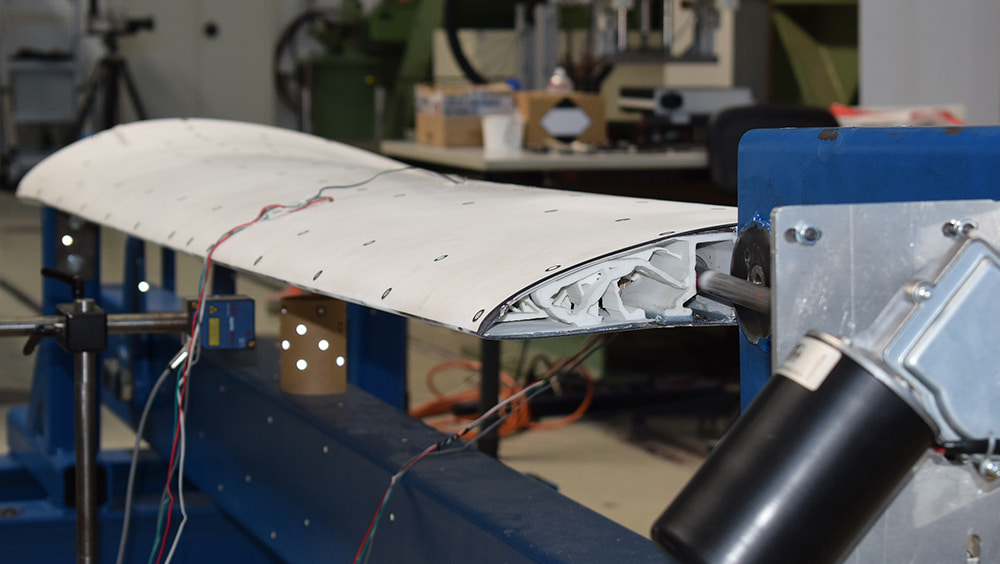3D printing at SKZ gives you wings!
Last year, the five-year research project "Shape-variable wing systems for gliders (MILAN)", which was funded by the Federal Ministry of Economics and Climate Protection via the German Aerospace Center (DLR) project management organization, was successfully completed. The overriding aim was to improve the aerodynamics of gliding. Additively printed components were manufactured for this purpose at the SKZ Plastics Center.

Test wing segment with integrated adjustment mechanisms. (Photo: TUM)
Cooperation project MILAN in the field of aviation successfully completed
In cooperation with partners from the Technical University of Munich (TUM), Alexander Schleicher GmbH & Co. Segelflugzeugbau and MP2 Carbon GmbH, the aim of the project was to exploit the considerable potential for increasing the performance and efficiency of modern gliders by designing the wing structure to be variable in shape, thus enabling a change between fast and slow states. TUM provided the basis for the project with an aerodynamic design of a self-developed glider; the wing structure and the actuation system were designed together with Schleicher. The shape-variable composite wing skin was co-developed and built by MP2.
3D printed components by SKZ
Based on the laminar profile developed at the TUM, adaptive adjustment mechanisms, so-called compliant mechanisms, were produced at the SKZ, which convert an input deformation at an actuation point into a precise shape change of the entire leading edge profile by elastic deformation of its truss-like topology. Different additive manufacturing processes (laser sintering, FLM, AKF Freeformer) and materials (including high performance polymers, FRP) were evaluated for their suitability. Both intermittent tensile tests to determine a reversibility limit and a specially designed test rig consisting mainly of printed components helped to evaluate the long-term performance of the different hinges. Finally, various mechanisms adapted to the inner wing structure were printed using SLS and installed in a test wing segment. TUM will be responsible for testing.
"Integration in other flying objects"
The results of the project can also be transferred to other applications in the future. "It is obvious that such additively manufactured components could be integrated into other flying objects, such as light aircraft or drones. But motor sports and sailing, for example, also offer great potential for the use of topologically optimized, compliant mechanisms from 3D printing," explains Patrick Limbach, materials developer at SKZ.
The SKZ will continue to expand its expertise in this area and incorporate the results into future research activities with other institutes and companies. Anyone interested in collaborating is welcome to contact the SKZ.
Learn more about additive manufacturing


